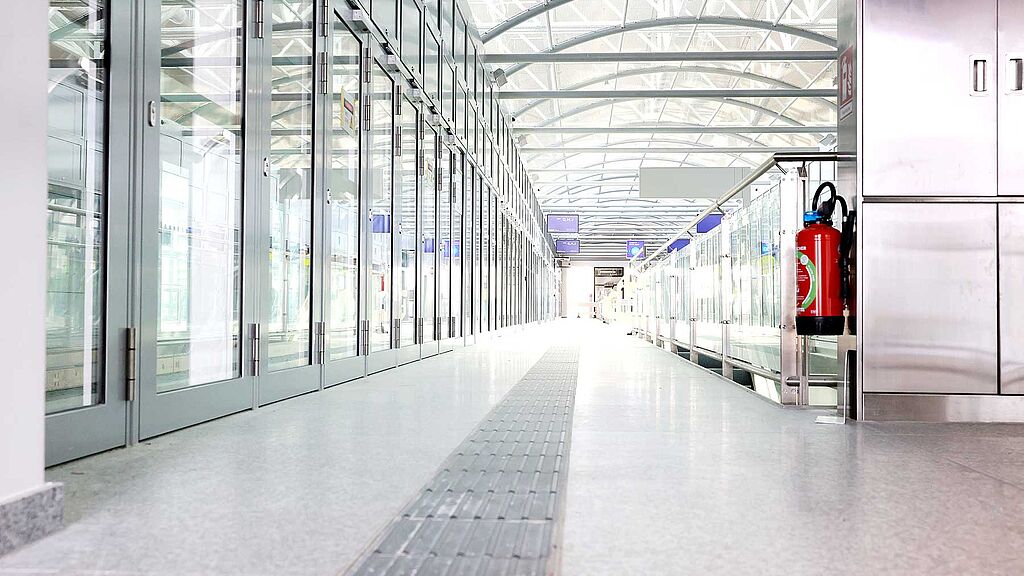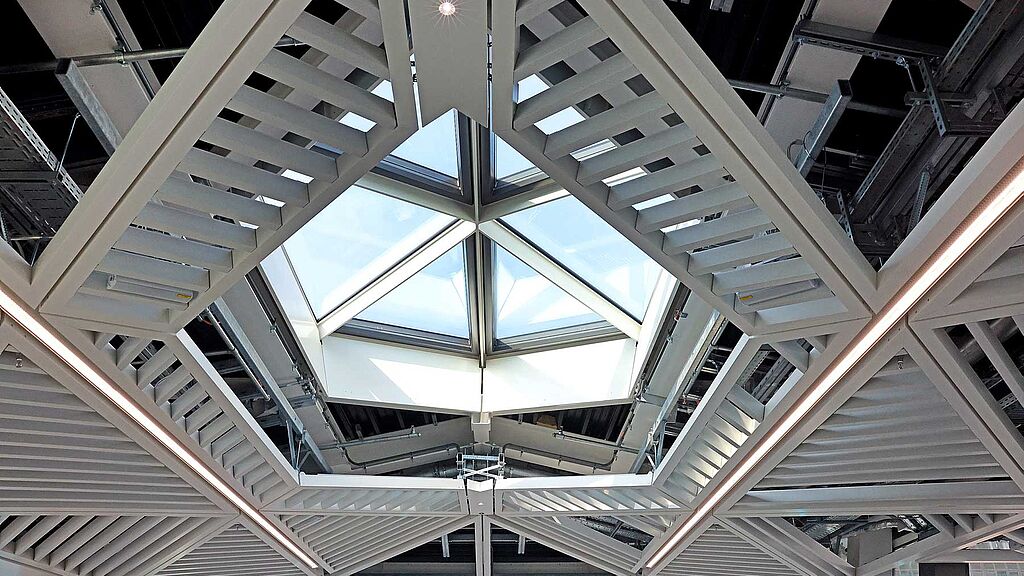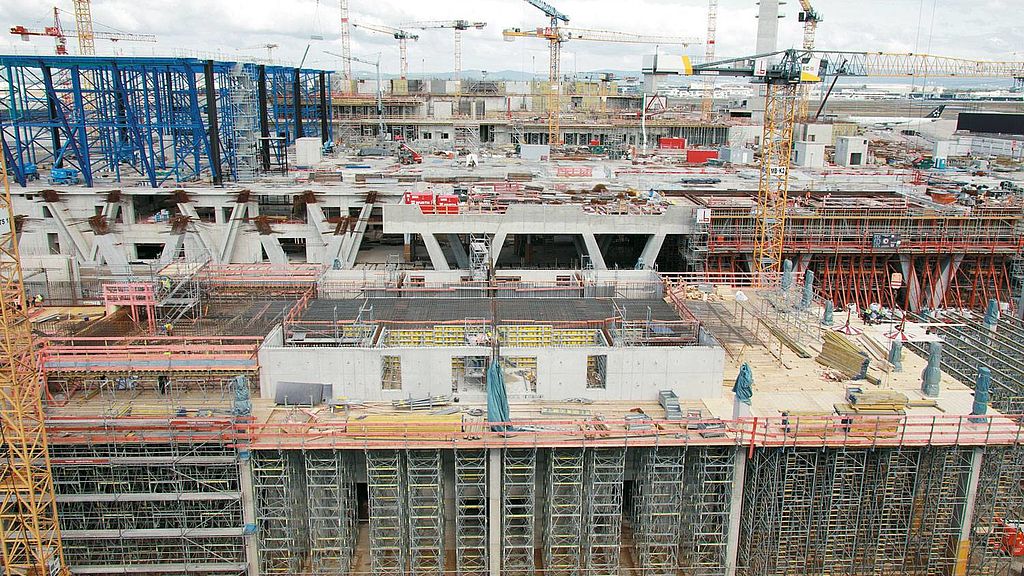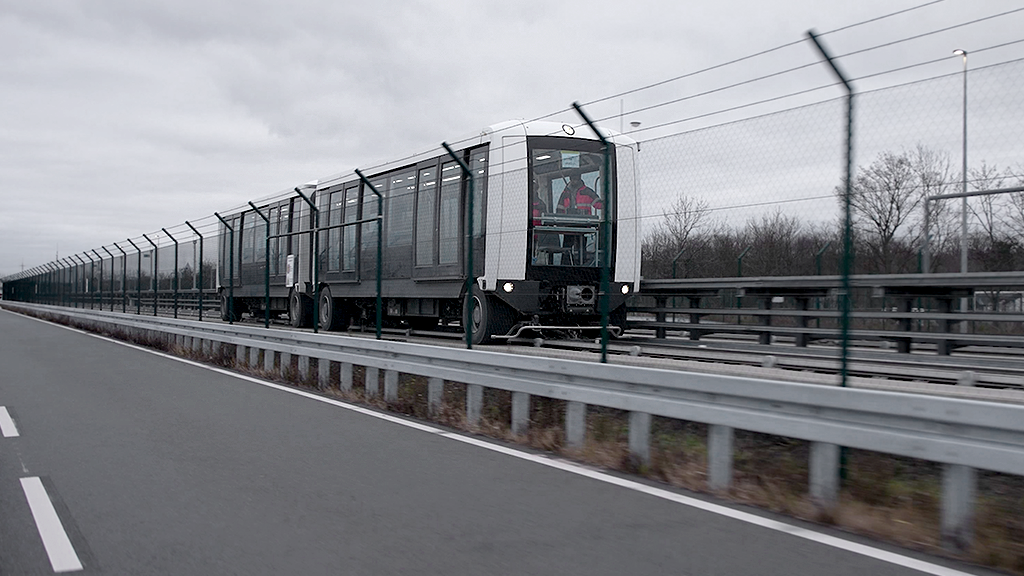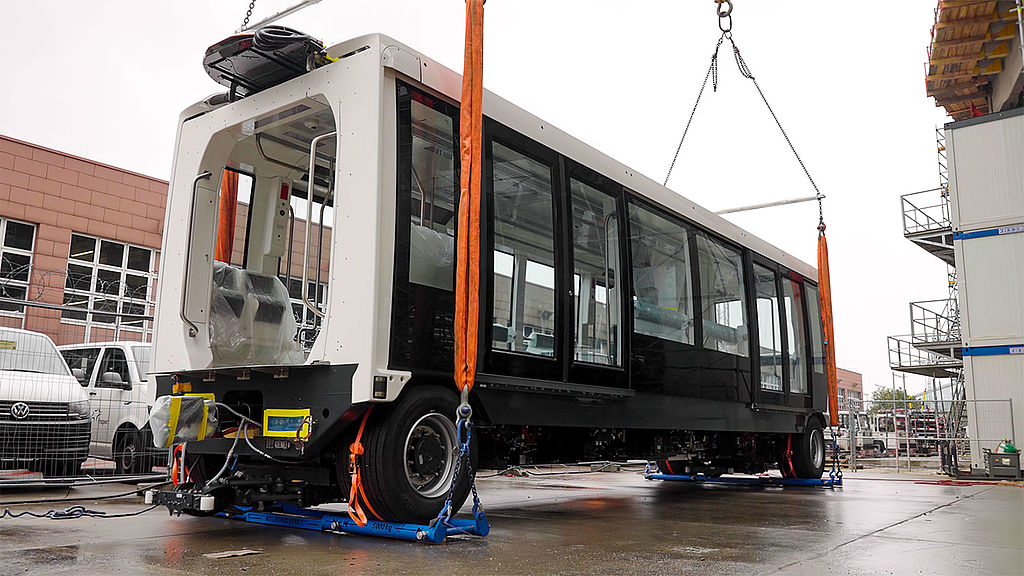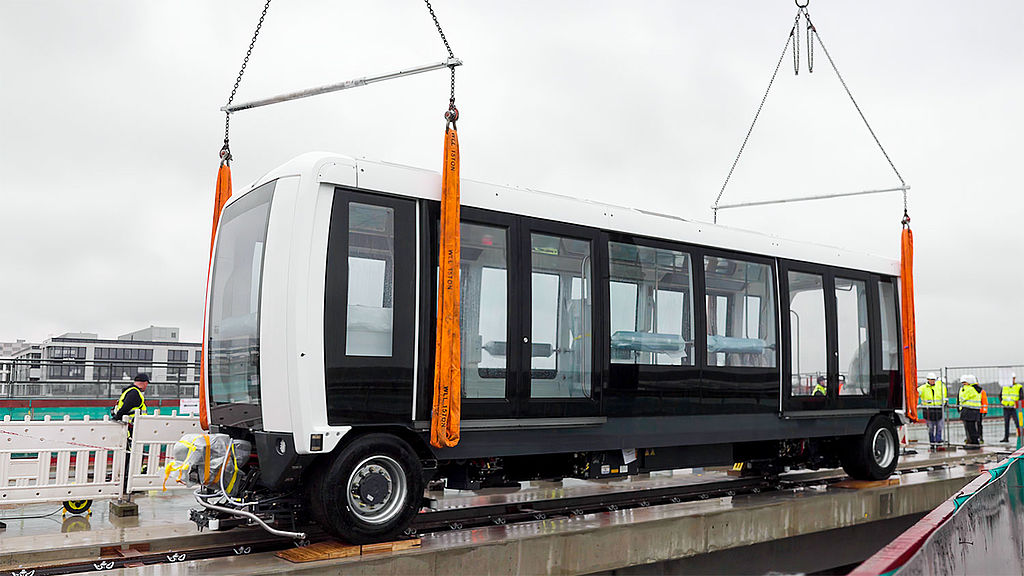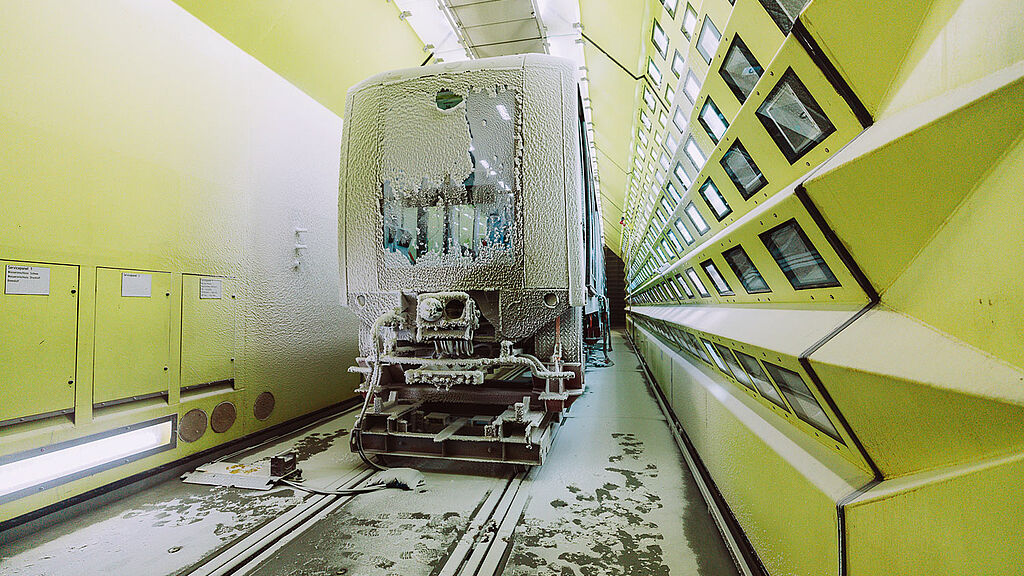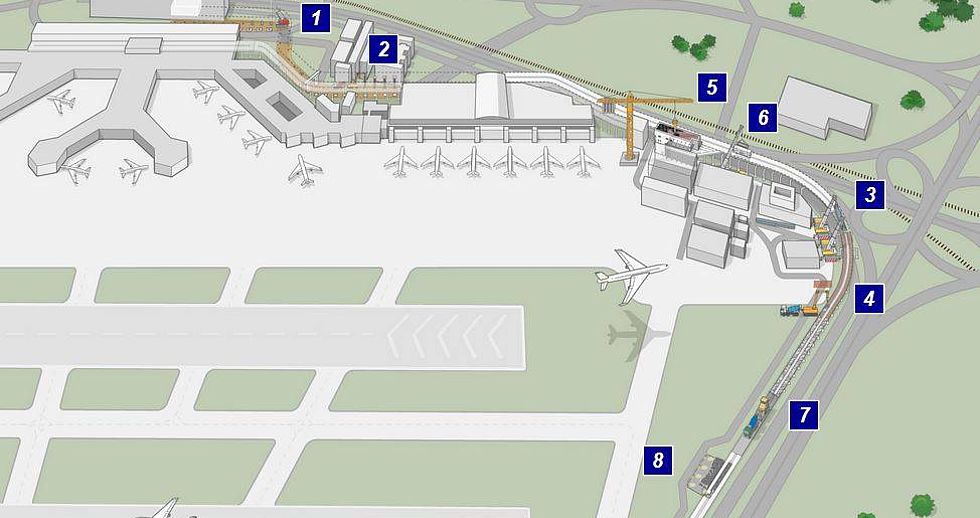From Train to Train
The new station at Terminal 1 is the starting point for conveniently getting to Terminal 3 in eight minutes or less. Those arriving at the regional or long-distance train station alongside Terminal 1 only have a short walk to the new people mover station. It is being built in the area between Terminal 1 and the Marriott & Sheraton Frankfurt Airport Hotel. The first required above-ground work was to remove the prominent pedestrian bridge linking them. Special lifting gear with suction cups was used first to remove the glazed surfaces, which were directly loaded onto waiting trucks. Parallel to the bridge’s demolition, work began to build the metal structural elements and external walls in order to close the gap as quickly as possible. The new Sky Line station will be linked both to Terminal 1 and to the Marriott & Sheraton Hotel. A total of 22 steel supports for the station and three large ones for the new connecting structure between Terminal 1 and the station will ensure that it is firmly anchored in the ground. There is enough room between the supports for a large number of bays in the bus station down below.
Two New Tracks
It isn’t necessary to build all of the stations from scratch. When building the first Sky Line people mover, which began operating in 1994, the planners took future developments into account. At Terminal 2, the station was therefore designed to facilitate the later addition of two more tracks.
Focus on the vehicles of the new Sky Line people mover
Twelve new, fully automated people mover vehicles will link Terminal 3 with the north of the airport. After it begins operating, they will carry up to 4,000 passengers in each direction among the three terminals. The trip between Terminals 1 and 3 will take just under eight minutes while reaching a top speed of 80 km/h. The vehicles of the new Sky Line are being custom-made for Fraport by Siemens.






